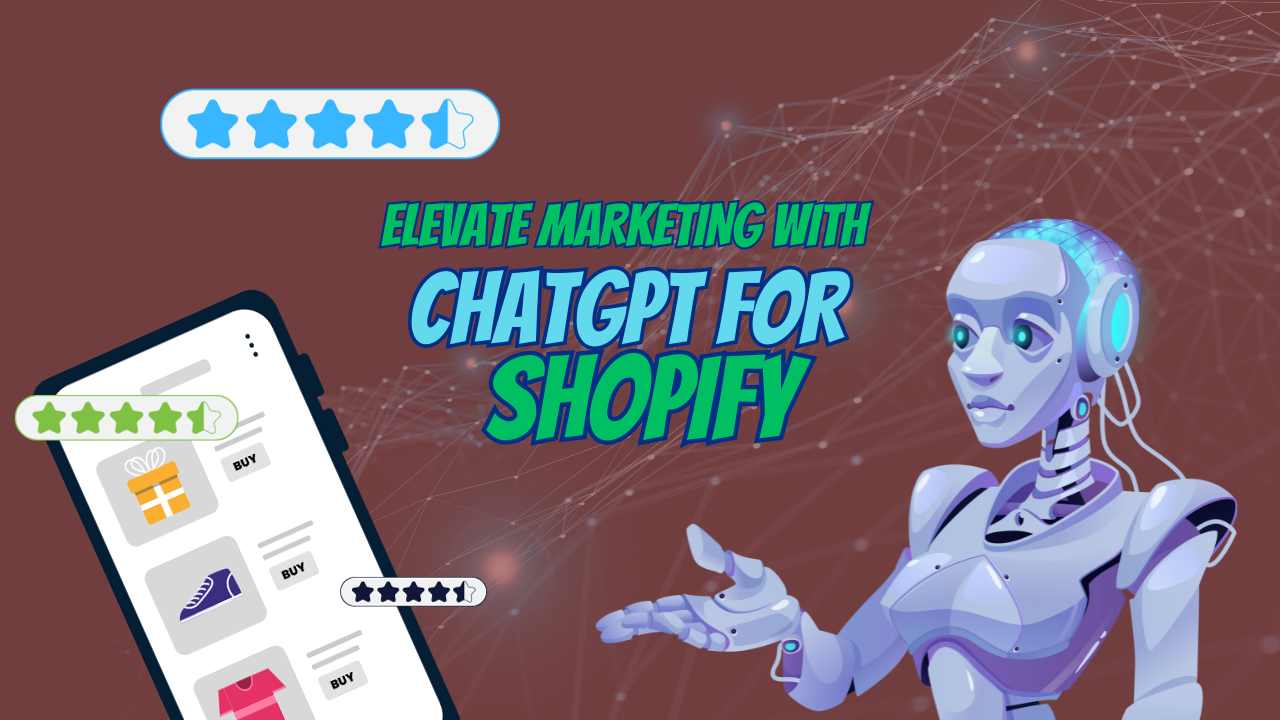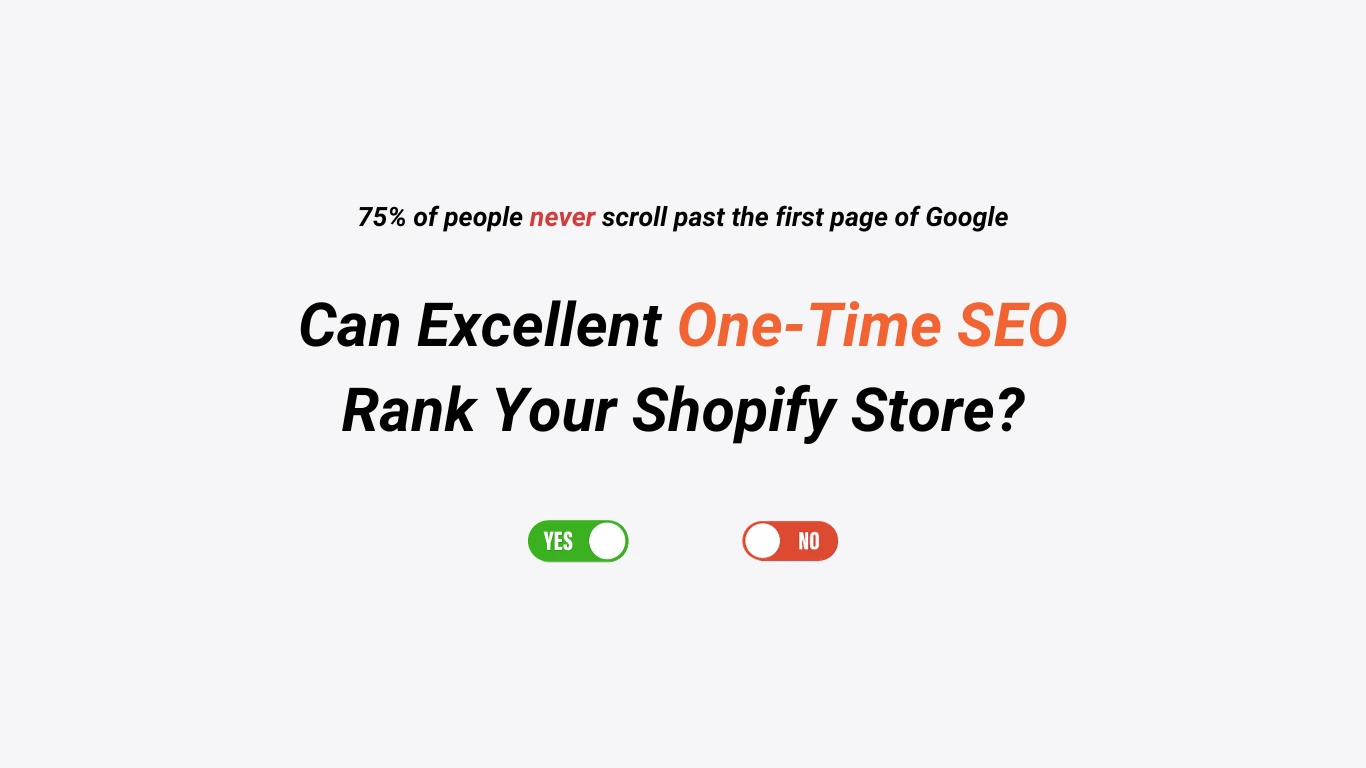The use of Generative AI and ecommerce amplifies as we enter 2024. And business marketing is a highly competitive space. So online businesses and marketers need to embrace the transformative approach. This article brings forward 7 best ways for online businesses to use AI Tools in 2024. We are especially encapsulating the Best Shopify AI Tools for sellers. Get ready to go head first into new trends and ecommerce marketing strategies of 2024.
Generative AI in Ecommerce: The New Benchmark
Generative AI in ecommerce facilitates dynamic content creation. Let’s take a step back. Think about the hero elements of your product description or blog. Can you come up with a catchy hook to make it even more impressive? Or must we say— more personalized? ChatGPT does it better. To offer users a personalized shopping experience on the website, Generative AI in ecommerce is a must. This road ahead promises a future where every customer feels seen, heard, and understood. Businesses must use these tools to expand further. But what’s the baseline?
The baseline is that online businesses adapt to the new benchmark practices. Generative AI is a subset of artificial intelligence. It has become a game-changer in eCommerce. Yes, you can automate repetitive tasks with it. But there is much more to it. Shopify Businesses now have a great opportunity to create highly relevant content and designs. This helps to garner profoundly personalized experiences that resonate with the customers.
AI Driven Store Creation for Businesses
Since the early days of Shopify, they have been an SEO-friendly platform. And now, with adapted AI Gen Tools, Shopify has become a leading ecommerce platform in 2024. Shopify Businesses now have the upper hand in terms of SEO as well as content. Pediatrician-turned-entrepreneur, Ella Miller, is the CEO of the baby products online business CoalaHola. The business uses AI by analyzing big datasets, producing insights, and helping with challenging problem-solving through the use of machine learning and NLP techniques. Ella says “My ability to understand and produce human-like content improves communication effectiveness and allows me to offer insightful information in a variety of fields. In the future, perhaps I hope to develop cutting-edge AI solutions that will enable smooth human-machine interaction, boost output, and solve certain business issues.”
Such an approach to building an AI-driven store is the way to go. Businesses must adapt and use AI to analyze data sets, automate processes, and create content. The foresighted entrepreneur further adds “The objective is to create tools that facilitate decision-making, make difficult activities easier, and progress a variety of industries.”
How is AI Transforming Business?
As you can tell, the integration of Generative AI in ecommerce is no longer a far-fetched reality. The intricacies of this technological evolution are being used for automation, ideation, content creation, videos, images, and data analysis. One thing is clear— those who harness the power of Generative AI will not only survive but thrive. The future is here, and its generativity bright!
7 Ways to Use Generative AI in Ecommerce
Personalized Shopping Experiences
Can you imagine a store that tailors itself to each customer’s preferences? A few years back, businesses had to go off based on meta ads personalization. However, generative AI is now making this a reality by analyzing past behaviors, predicting future interests, and presenting products uniquely curated for individuals. Generative AI in ecommerce allows businesses to analyze customer behavior and preferences. In 2024, ecommerce sites will be more intuitive and user-centric than ever before.
Use of Shopify AI Tools
Shopify AI Tools like Shopify Magic help to generate highly relevant and personalized content for products. If you didn’t know, retargeting ads have a 70% higher conversion rate than regular display ads. So the best way to retarget customers is levelling up personalization. Using Shopify AI tools, businesses can nail personalized product recommendations. All in all, this enhances the shopping experience and boosts sales.
Dynamic Product Descriptions
Static product descriptions are a thing of the past. Generative AI is crafting dynamic, engaging content. Hook the customers with just the right words adapted to their preferences. That is the key here. Use AI to highlight different product features. You can also emphasize the benefits based on user behavior. The era of one-size-fits-all descriptions is fading away.
Visual Appeal and Virtual Try-Ons
Generative AI is taking the visual appeal to new heights. If you did not know, DALL-E has been around for about two years now. And people have been playing around with this AI image generation model for various use cases. There are many other AI Tools that help to generate high-quality visuals in real-time. Use these tools to enhance the product discovery process in 2024. Enabling virtual try-ons on Shopify Stores is one of the best ways to showcase products on the website. This enables customers to experience products before making a purchase. Think about it from the UX lens. This not only boosts confidence but significantly reduces return rates.
Automated Inventory Management
Shopify Product SKUs are the unique identifiers of your products online. They help in inventory management, order management, shipping process, and more. However, creating these codes has to be thematic. Since each product has different sizes, colors, and other design features, generating SKUs with the help of AI Tools saves time. Employ AI to manage inventory more efficiently.
Conversational Commerce
Chatbots have evolved into intelligent conversational agents, powered by Generative AI. In 2024, these virtual assistants are not just answering queries; they’re engaging in meaningful conversations, providing product recommendations, and even assisting in the decision-making process. The result? Enhanced customer satisfaction and increased conversions.
Predictive Inventory Management
Generative AI is not limited to customer-facing applications. It plays a pivotal role behind the scenes too. Predictive inventory management in 2024, ensures that ecommerce businesses can do the following:
- Anticipate demand
- Optimize stock levels
- Minimize wastage
Besides that, predictive analytics can help in forecasting demand. It also prevents overstocking or stockouts. This is highly beneficial during festive seasons as order management becomes difficult.
Ecommerce is limitless with artificial intelligence
Generative AI in ecommerce can be used to generate initial blog outlines and topical keyword mapping. This helps to accelerate the content creation process by over 2x. With the help of all these tools, businesses can put an end to brand-damaging content. Staying ahead of the curve is a necessity. As we step into 2024, ecommerce marketing undergoes a profound transformation. Driven by the relentless advancement of Generative AI in ecommerce, we urge businesses to adapt. Go down this rabbit hole of tools and strategies to build marketing strategies this year.
Also, take a look at our other articles.











